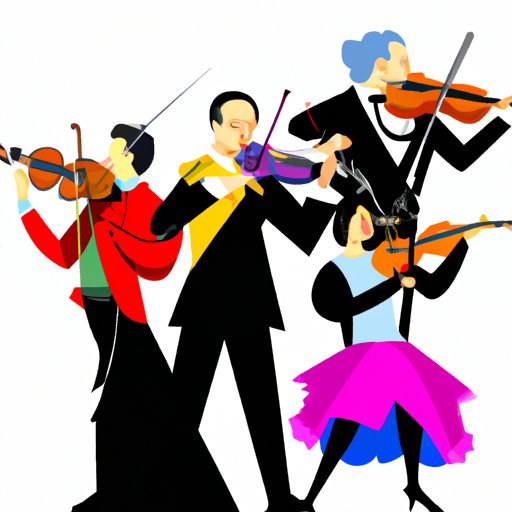Introduction
When we think of classical music, one of the first things that might come to mind is a symphony. A symphony is a musical composition played by an orchestra that has been around for centuries. However, many people might not fully understand what a symphony is, how it has evolved over time, and its significance within the world of music. In this article, we’ll provide you with a guide to understanding symphonies, their histories, and their cultural significance.
Historical Perspective
The symphony originated during the Baroque period, from roughly 1600 to 1750. During this time, composers mostly wrote music for small groups and ensembles. However, Johann Stamitz is credited with increasing the size of the orchestra in the mid-18th century, which allowed composers to write more elaborate works. The classical period of music, which lasted approximately from 1750 to 1820, is known for producing the most significant symphonies in history, including those of Wolfgang Amadeus Mozart and Ludwig van Beethoven. During the Romantic era, which lasted from the early 19th century to the early 20th century, the symphony evolved once again, becoming more emotionally charged, more complex, and more personal.
Analysis of Compositions
Some well-known symphonies include Beethoven’s Fifth Symphony, Mozart’s Symphony No. 40 in G minor, and Tchaikovsky’s Symphony No. 5. The structure of a symphony typically involves four movements, with each movement being a separate piece of music with its mood and tempo. The first movement is usually the fastest and the most complex, while the second movement is usually slower and more lyrical. The third movement is often a dance-like or scherzo movement, and the final movement is typically upbeat and fast, bringing the symphony to a dramatic conclusion. What makes symphonies powerful is their ability to convey emotion, tell a story, and take listeners on a journey through changes in mood, tempo, and tone.
The Symphony in Pop Culture
The symphony has played a part in pop culture for many years. One of the most famous examples of symphonic music in pop culture is the movie score for Star Wars, composed by John Williams. The use of orchestral sound in movie scores creates an atmosphere of grandeur, tension, or emotion that other forms of music may not always achieve. Many contemporary artists, like Kanye West and Beyonce, have also incorporated orchestral sounds in their modern pop music.
Famous Composers of the Symphony
Some of the most famous composers of the symphony include Wolfgang Amadeus Mozart, Ludwig van Beethoven, Antonin Dvorak, and Pyotr Ilyich Tchaikovsky. These composers pushed the boundaries of what a symphony could achieve, combining unique harmony, melody, and structure to create awe-inspiring pieces of music. For example, Mozart was a prodigy whose symphonies were often playful, lively, and full of energy, while Beethoven’s symphonies were more dramatic and intense, showcasing his inner turmoil.
The Role of Instruments
Symphonies are composed of a wide variety of instruments, each with its unique role in creating a cohesive sound. The strings, which include violins, violas, cellos, and double basses, form the backbone of the orchestra, providing the melody and harmony. The woodwinds, which include flutes, oboes, clarinets, and bassoons, add richness and depth to the musical composition. The brass, including trumpets, trombones, and horns, add power and grandeur, while the percussion, such as timpani and snare drums, provide the rhythmic backbone to the piece.
Contemporary Symphonies
In recent years, the symphony has evolved once again as composers introduce new sounds and styles. Modern symphonies such as Tan Dun’s Symphony 1997 have a more avant-garde sound, as they fuse traditional classical music with modern music, instrumentations, and electronics. Some contemporary symphonies have also been composed with a social conscience, addressing current issues such as climate change, race relations, and politics.
Conclusion
In conclusion, the symphony is a complex and beautiful musical composition that has stood the test of time. Its musical history spans centuries and continents, and its use in pop culture and modern music suggests it will continue to take on new forms and meanings in the years to come. Understanding the role of the symphony in our cultural history enriches our appreciation for classical music and provides a window into the human experience, capturing the range of human emotion, from grandeur and joy to sorrow and despair.
